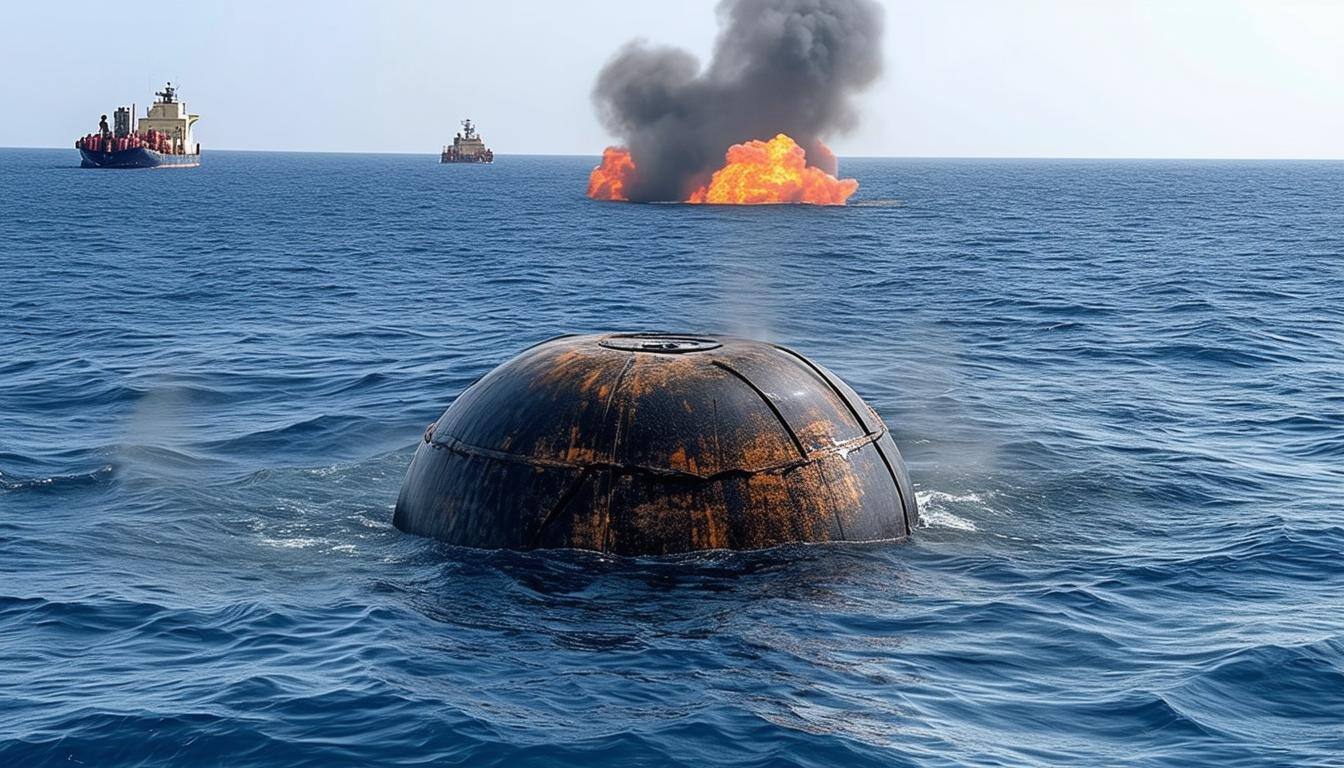Naval mines, a historically low-cost yet effective weapon of asymmetric warfare, remain a formidable threat in maritime conflicts.
This is particularly evident in the ongoing Red Sea tensions, where Yemen’s Houthi movement has increasingly leveraged the maritime domain to disrupt global shipping routes and exert strategic pressure. These actions echo historical instances, such as the 1984 sea mine sabotage that disrupted Red Sea navigation and required U.S.-led countermeasures to restore order. Today, the stakes are even higher, as the Houthis weaponize mines alongside drone, missile, and boat swarm tactics in their regional campaign.
Evolution of Houthi Maritime Strategy
The Houthis, primarily known for their terrestrial guerrilla campaigns, shifted their focus to the Red Sea after seizing Yemen's capital in 2014 and expanding into coastal areas. By capturing key ports like Hodeida in 2021, they gained access to naval assets, enabling their maritime aggression. Their arsenal now includes improvised floating mines, Soviet-era devices, and advanced seabed mines resembling Iranian designs, indicating technology transfers from Tehran. These mines are deployed using fishing vessels and speedboats, reflecting the group’s resourceful adaptation to a maritime strategy.
Since 2017, the Houthis have sown hundreds of mines off Yemen’s Red Sea coast, targeting Saudi-led coalition forces and securing strategic islands. Their recent military drills highlight the centrality of naval mines in their warfare doctrine. While their current focus remains on targeting Israeli and allied shipping, escalating regional conflicts, particularly involving Gaza and Lebanon, could prompt more aggressive use of mines to close chokepoints like Bab el-Mandeb or disrupt broader international shipping.
Tactical and Strategic Implications
Naval mines offer disproportionate tactical advantages to actors with limited naval capabilities, imposing significant costs on adversaries engaged in mine clearance. This is particularly true in constrained waterways like the Red Sea, where drifting mines, propelled by monsoon-driven currents, can spread unpredictably, endangering civilian and commercial vessels. The Houthis’ indiscriminate use of mines poses risks not only to adversaries but also to neutral parties, including fishing communities and ships bound for Houthi-controlled ports.
Despite their tactical utility, mines lack precision targeting, potentially jeopardizing vessels aligned with Houthi sympathizers, such as Iran or Russia. Nonetheless, their presence has already inflicted casualties among Yemeni coastguards and disrupted regional maritime traffic.
Regional and International Countermeasures
Regional powers and international allies have responded with varying levels of preparedness. Saudi Arabia, the UAE, the U.S., and the U.K. have invested in mine countermeasure (MCM) capabilities, deploying specialized vessels like Sandown-class minehunters and Avenger-class ships. U.S. Task Force 52, based in Bahrain, and the U.K.’s 9th Mine Countermeasures Squadron conduct joint drills to enhance operational readiness. However, these efforts are hampered by resource constraints and the inherent vulnerability of mine-clearing platforms to drone and rocket attacks.
Strategic Outlook
The Houthis’ ability to adapt their tactics underscores the need for enhanced vigilance and investment in mine warfare countermeasures. As the Red Sea becomes increasingly contested, the evolving Houthi threat necessitates coordinated international action to ensure the security of vital shipping lanes and mitigate the risks posed by this unconventional but potent form of maritime warfare.

Source: Stimson






